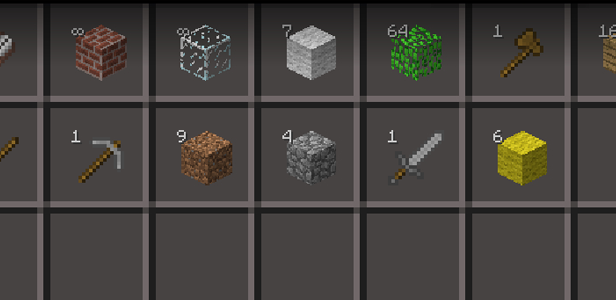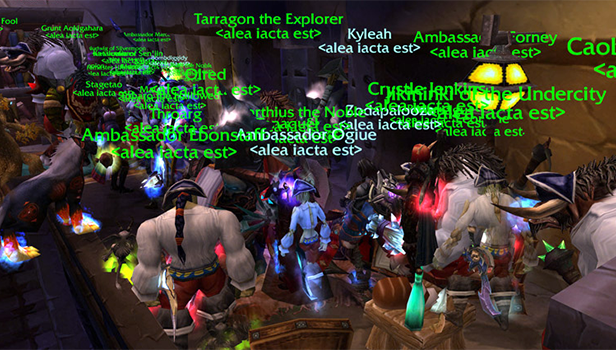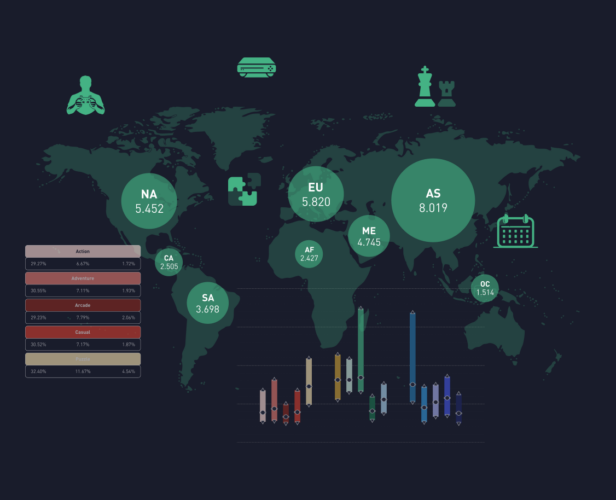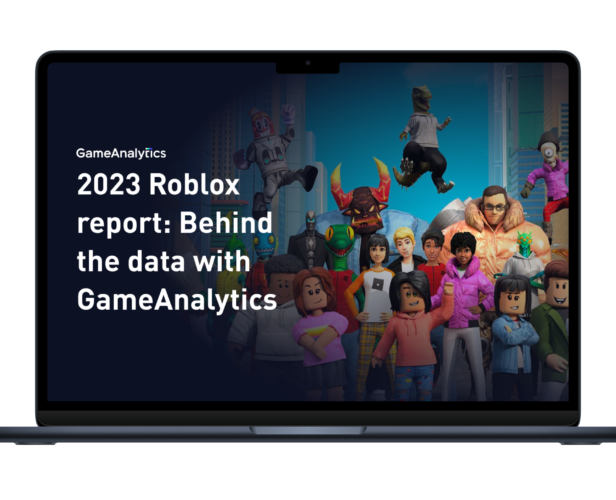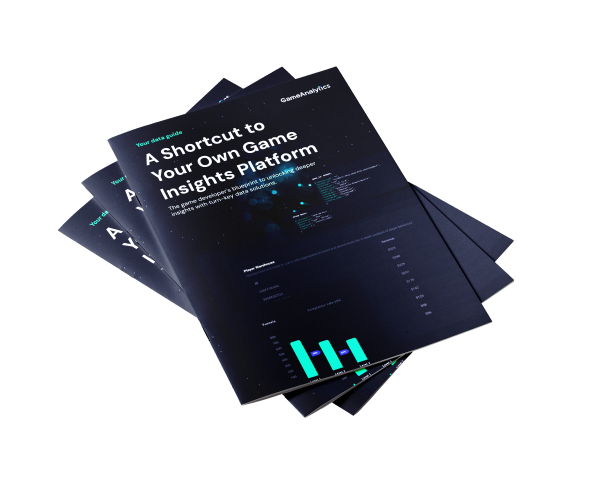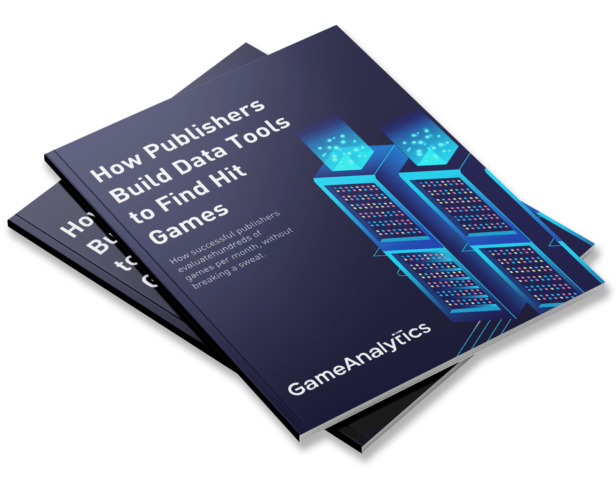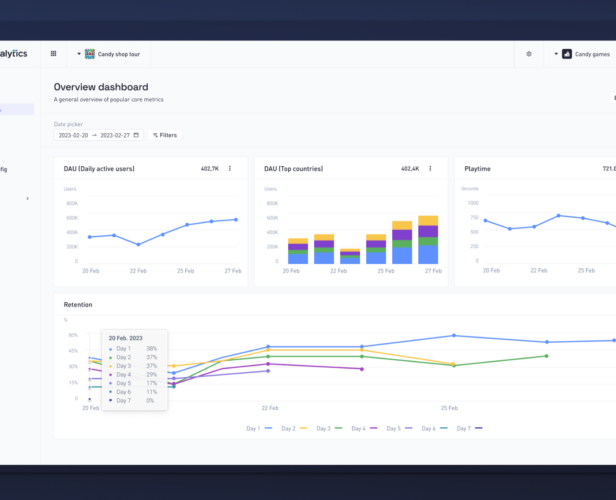Resources > All
Insights and tips about the games industry
Subscribe for gaming insights, industry reports and product updates delivered straight to your inbox.
#Tool & Product
Getting Started With GameAnalytics
Analytics is a powerful tool for informing decision making at strategic and operational levels in game development. It will help you answer key questions about design, fun, engagement, play, monetization and more. But it is a relatively new process in game development and there is not a lot of knowledge available out there for the non-expert. In this blog post, we will try to help you get started on analytics.
#Data & Analytics
Frequent Itemset and Association Rule Mining
Frequent itemset mining is an interesting branch of data mining that focuses on looking at sequences of actions or events, for example the order in which we get dressed. Shirt first? Pants first? Socks second item or second shirt if wintertime? Sequence analysis is used in a lot of different areas, and is also highly useful in games for finding behavioral patterns that lead to particular behaviors, for example a player quitting a game. Here is how it works.
#Data & Analytics
Practical Issues In Game Data Mining
Apart from the purely methodological concerns that gains the most attention on this blog, there are a range of important issues to consider when planning to or performing collection of game telemetry and mining of this type of data. For example, confidentiality of user data and effective pre-processing approaches are among the most important. Here we take a brief look at some of them.
#Data & Analytics
Third Party Analytics: What Are The Options?
Outside the companies that actually develop computer games and other forms of interactive entertainment, a rapidly increasing number of third-parties have emerged in the past few years to provide analytics-related services to companies. Here we provide a brief overview of the types of providers available and the pros/cons of their services.
#Mechanics & Features
Feature Selection and the Law of Diminishing Returns
A problem that recurrently mentioned during the recent Data Science Day in Berlin is feature selection: given the array of possible variables/features to track from a digital game, which of these should we track? The solution I heard mentioned most often was: track everything, analyze everything. However, this approach is not without its problems, notably in terms of the resources it requires to analyze everything. Another thing to consider is the law of diminishing returns.
#Data & Analytics
What Is Game Telemetry?
Telemetry one of the fundamental terms in game analytics, describing the collection of data over a distance. The collection, analysis and reporting of user-behavior telemetry is the foundation for current analytics in game development. There is some confusion about the term, however, so we wanted to provide a bit of information about what telemetry is and its properties.
#Data & Analytics
What Are Game Metrics?
In a previous post we discussed what game telemetry is, i.e. the data we use as inputs in game analytics processes. Game metrics is what telemetry is transformed into, and what provides the direct value to development and monetization. In this post we try to set up a definition for what a game metric is.
#Data & Analytics
Metrics In Online Games: A Historical Perspective
Online games are of particular interest in game data mining because their underlying business model is highly dependent on understanding player behavior, and currently one of the major forces driving the use of and innovation in data mining in game development. In this post, we take a brief look at the historical background behind the current situation and discuss a few business perspectives.
#Data & Analytics
Measuring Player Experience
A topic that is currently gathering a lot of interest in the games research community is how player behavior in-game relates to the subjective experience of playing a game. The implications are obvious: if we can analyze the behavior of a player and find out whether or not the player is having a good experience playing the game, and if not why, there is a lot of revenue that we can prevent loosing from players quitting. However, there are some challenges towards this.
#Data & Analytics
Fundamentals of Gameplay Metrics Work (Pt. 2/2): Explorative vs. Hypothesis Driven
How do we work with gameplay metrics at the fundamental level? In the first part of this post the concepts of analysis ("breaking down things") and synthesis ("putting things together") were introduced as two fundamental approaches used here at Game Analytics to help categorize and define workflows. In the second part, we dig deeper and look at the factors driving the work.
#Data & Analytics
Fundamentals of Gameplay Metrics Work (Pt. 1/2): Synthesis Vs. Analysis
Gameplay metrics form the "bread and butter" telemetry data when evaluating design. These are the metrics that describe how people actually play games. But how do you work with them? In this two-parter, we take a look at the theoretical fundamentals that inform telemetry work at Game Analytics.
#Data & Analytics
Ten Great Game Telemetry Reads
Given the huge degree of interest in game telemetry and the analysis of player behavior, not the least in the social online games/F2P area, it is no surprise that there is a steadily increasing stream of posts, articles and reports being released on various topics within analytics. We wanted to bring you some of the most interesting.
#Data & Analytics
The Allure Of Numbers
For people working with game analysis, gameplay metrics (measures of player behavior, e.g. navigation, item- and ability use, trading etc.) is the kind of data that - if data were gemstones – would be diamonds. And not the regular white, discount version but the flawless blue ones that we need Indiana Jones to steal back from bad-tempered natives in the South American jungle.
#Editor's pick
Game data pipeline: Building vs buying
As a large number of studios, publishers, and game developers are heavily relying on data to guide their decisions, they need to decide between building or buying. But which one is more efficient? To assist you in understanding the Total Cost of Ownership (TCO), we broke down the following key considerations: Setup requirements Cost calculation Team needs and recruitment
#Editor's pick
Mobile gaming benchmarks for Q1 2024
Uncover the industry’s performance with Q1 2024 benchmarks. Explore key metrics like retention rates and session engagement to benchmark your games against industry standards. What’s inside? Retention benchmarks for casual, classic, and mid-core games Session length benchmarks for games launched in North America, Europe, the Middle East, and Asia Session count benchmarks across 15 game genres
#Editor's pick
Grow your revenue with Xsolla Web Shop for Mobile Games
“Xsolla anticipated this seismic shift earlier this year, when we launched multiple products that are being actively used by some of the world’s largest game companies to increase profit and build closer relationships with their mobile and pc players. We’ve now combined these products and learnings into an elegant new solution called Xsolla Web Shop for Mobile Games,” said Chris Hewish, President of Xsolla. Through Xsolla Web Shop for Mobile Games, developers can expect significant revenue growth and can reach new players in new geographies previously unavailable to them. This solution solves many challenges developers face; such as discoverability, declining profit margins, lack of control over the user experience, access to localized payment methods, cross game marketing, more efficient user acquisition, effective collaboration with creators and influencers, and much more. Three industry-changing announcements make this opportunity more timely than ever:...
#Editor's pick
2023 Roblox report: Behind the data with GameAnalytics
Download a comprehensive report of Roblox player behavior and game performance based on GameAnalytics data from 2023. This report highlights critical benchmarks and insights to help Roblox creators optimize their games. What’s inside? Devices analysis Players’ daily session frequency Average revenue spent per user Session length and count benchmarks Retention benchmarks Revenue benchmarks
#Editor's pick
The Game Developer’s Handbook to Mastering Data Solutions
Data is the key to success in the ever-evolving landscape of game development. Explore this guide to transform your data into insights using our turn-key data solutions. What’s inside? Our comprehensive guide explores cost-saving strategies and real-world applications for advanced use cases. Learn how to seamlessly integrate data sources, unlock detailed player insights with Player Warehouse, access real-time data with Raw Export, and ensure data privacy compliance.
#Case study
Developing a #1 VR MMO: Ramen VR’s Journey with GameAnalytics
Discover how Ramen VR used data-driven game development to launch "Zenith: The Last City", which became the #1 bestselling game all major VR platforms—including Meta Quest/Rift, Steam and PlayStation VR.
#Editor's pick
Using AI to Supercharge Your Game Art Design
Discover how tweaking AI tool settings can help you generate varied art styles, produce better concepts, and speed up the process from prototype to final design. With AI on your team, creating unique game art has never been easier or faster.
#Editor's pick
Event Design & Tracking Guide for GameAnalytics
Learn how to create an adaptable tracking plan, enabling you to unlock richer insights and maximize the value of your data within GameAnalytics.
#Editor's pick
How studios use DataSuite to find hit games
Learn how successful publishers evaluate hundreds of games per month, to find the next hit game.
#Editor's pick
Among Us VR dev talks about how to create immersive worlds
VR is all about immersion. It’s about allowing players to lose themselves in more than just a game, but a new world. You have to build VR experiences the right way to make this happen. This goal is always top-of-mind for Schell Games. In this interview, we spoke to Schell Games’ Vice President of Product, Charlie Amis, to learn their story. “For VR, you want to make the player feel like they’re actually in the world you’ve created. This isn’t as true or a high priority in PC and console games. If people start to lose that sense of presence and immersion, then a lot of the reason they put the headset on is hurt. They want to go to another world or be someone new. So you need to help them feel like they’re really there and really that...
#Editor's pick
GameAnalytics H1 Update: New Product Improvements!
It’s been a busy time since February, when the largest update in GameAnalytics history was launched. Read on for more information about what’s changed recently, and new functionality coming to the platform very soon.
#Case study
How TapNation uses DataSuite to increase the LTV of 19 hit games by 50% in only 6 months
Smashing obstacles with Giant Rush While they’ve seen huge improvements using DataSuite across their portfolio, one game stands out in particular: Giant Rush. (And not just because the character is huge.) The title has now reached over 140 million downloads. And, through a series of A/B tests and insights from the data they collected, they’ve been able to increase the LTV by a whopping 200% over six months for this specific title. “It’s because we A/B test every day,” Philippe Grazina from TapNation says. “We ask questions like: When are players leaving the game? For example, the boss in Giant Rush. If we spot that they’re leaving at the same point every time, we know we need to make a change. Small details like that really help.” Through these granular insights, TapNation can iterate and improve on their game step...
#Editor's pick
How to Build a Data Warehouse for Games from Scratch
Over our last couple of blogs around data warehouses, we’ve explained how they let you analyze data from across your portfolio and look at what insights you can gather from them. Now, we’ll dive into how to build a data warehouse. What steps do you need to take and what resources will you need? To figure this out, we’ve rounded up the costs, steps, and tools we think you’ll need to get started. Please note, that we haven’t included the cost of running an engineering department (which you’ll need), which can end up being a lot of $$$. What do I need to get started? Before you start, you’ll need to ensure you have the right people. You’ll likely need a software or data engineer, and perhaps an architect or DevOps engineer. You’ll also need to budget for tools like...


